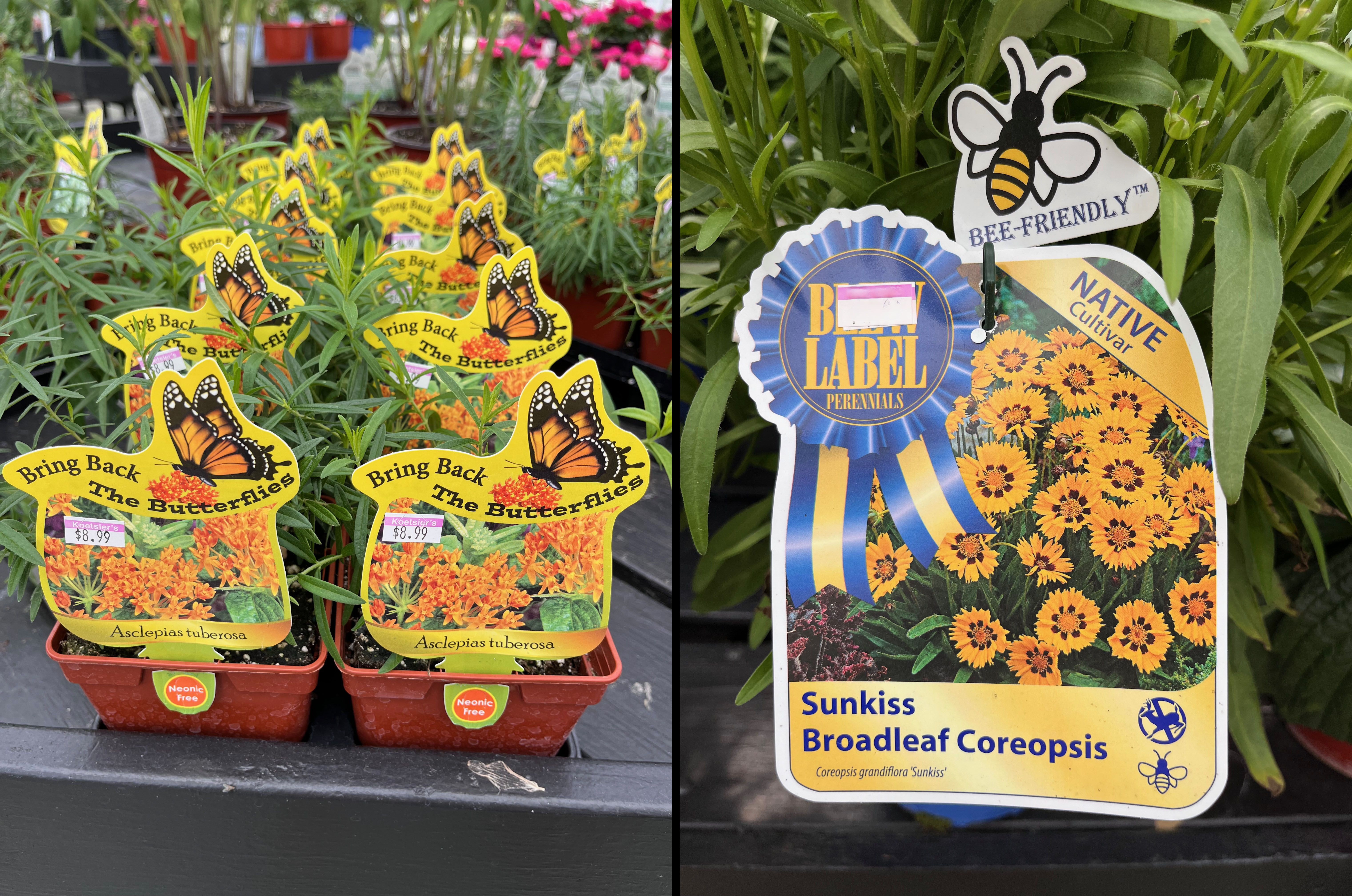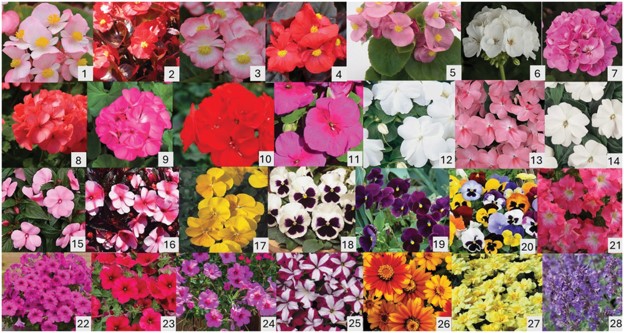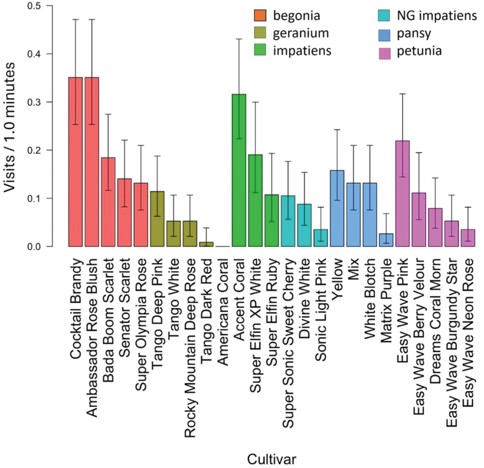Some cultivars of annual plants are pollinator-friendly
There is a wide variation in pollinator attractiveness in the most popular annual bedding plants.

Pollinator health has been a topic at the top of people’s minds over the last few years. Numerous studies have shown that consumers are interested in bee-friendly plants and pest management practices and are willing to pay a premium for plants grown with bee-friendly practices. Plant marketers have responded to these findings by creating flashy point-of-sale tags for plants well-known to be highly attractive to pollinators including butterfly weed (Asclepias) and Coreopsis (Photos 2 and 3).

Dave Smitley, professor emeritus of entomology, recently published a study that looked at pollinator visits of three to six cultivars of the six most popular annual plant species: petunia, impatiens, begonia, geranium, pansy and New Guinea (Photo 4). These plant species account for up to 50% (over $900,000 in sales) of yearly sales in the U.S. Smitley and his team compared the number of pollinator visits among the popular plant species to two annual flowers and two perennial flowers known to be pollinator attractive: zinnia ‘Zahara Sunburst,’ marigold ‘Alumia Vanilla Cream’, catmint ‘Walker’s Low’ and coneflower ‘Pow Wow Wild Berry’.

While many cultivars of the most popular annual flowers were not very attractive to pollinators compared to the benchmark annual and perennial species, there were a few that were moderately attractive to pollinators, including begonia ‘Cocktail Brandy’ (Photo 1), begonia ‘Ambassador Rose Blush’, impatiens ‘Accent Coral’ and impatiens ‘Super Elfin XP White.’
There was great variation in pollinator attraction between cultivars even within species, (Photo 5). For example, begonia ‘Cocktail Brandy’ had over double the pollinator visits compared with begonia ‘Super Olympia Rose.’ The cultivars that were most attractive to pollinators would benefit from the added value of labeling them as bee-friendly. For more information, check out the press release, “Some varieties of annual flowers have a place in pollinator-friendly gardens.”

Gardeners looking for annuals that are beneficial to pollinators should try zinnia, portulaca, marigold, bidens and alyssum. Many perennials and herbs are excellent pollinator plants. You can find many resources on pollinator gardens with the Michigan Pollinator Initiative and the Gardening for Pollinators websites. Also, check out regional lists of native bee-friendly plants by the Xerces Society. If you would like to see these practices in action, visit demonstration pollinator gardens maintained by Michigan State University Extension at the Grand Ideas Garden in Grand Rapids, Michigan, and at Windmill Island Gardens in Holland, Michigan.
This article is based on a study published May 13, 2024 by Smitley, D., C. Oneil, E. Hotchkiss, E. Runkle, and J. Studyvin. 2024. Evaluation of the most popular annual flowers sold in the United States and Europe indicates low visitation rates by pollinators and large variation among cultivars. J. of Economic Entomology.



 Print
Print Email
Email

